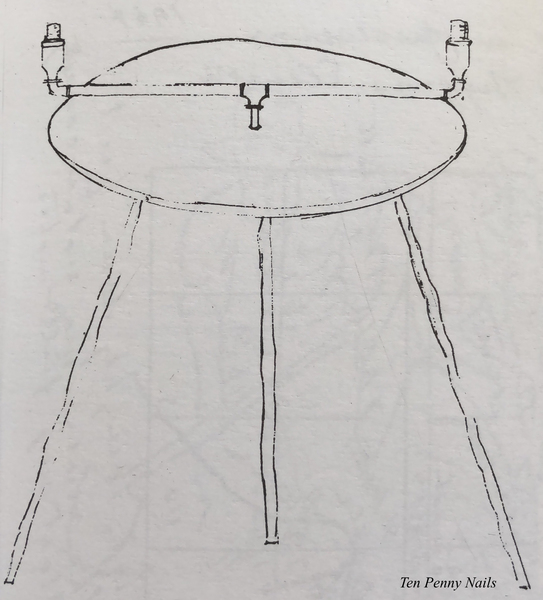Dublin Core
Title
Description
In the summer of 1864, Mormon settlers near Richfield dug a canal from the Sevier River, only to find that water wouldn’t run through it. In those days, digging canals was done by hand with a pick and shovel, and if a canal failed after all that hard work, the planning and digging started again. After all, without successful irrigation systems to water crops, early settlements in the Sevier Valley could not thrive.
But hard work was only part of the equation. Building a functional canal from the Sevier River to nearby farms required some expertise in civil engineering. One such expert was a Swedish immigrant named Niels Morton Peterson, who relied on a peculiar tool, nicknamed “Old Scraggen.” The tool was described as “a strange sort of surveying instrument. It consisted of a tin pipe three feet long with an elbow and a little glass bottle at each end with the bottom out and a cork at the top.” The nickname may have come from a Swedish or Norwegian word meaning a “shriveled, wretched person.” In any case, Peterson used Old Scraggen to map the topography of the land to find a downhill path for the water and helped create the first successful irrigation canal in Richfield. It was completed in forty days and began turning water on April 26, 1865. After that, Old Scraggen was used to survey nearly all the irrigation canals built in the Sevier Valley.
With these new surveying techniques, settlers in the Sevier River Basin used irrigation to establish permanent agriculture and industry. The first creamery opened in the 1870s, and in the early 1900s farmers began growing sugar beets. Today, 100 percent of the water in the Sevier River is allocated, making it the most used river in North America. This fact underlines the importance of irrigation to settlement along the Sevier River. As communities there continue to grow, what future new technologies might increase production without requiring more water?
Creator
Source
_______________
See Snow College Library – Richfield Campus, exhibition file for Drained: Using Water from the Sevier River, curated by Carol Kunzler and Tonia Lewis, 2020; Richfield Centennial Committee, Golden Sheaves from a Rich Field: A Centennial History of Richfield, Utah, 1864-1964, Richfield, 1964; Revo Morrey Young, Ten Penny Nails: Pioneering Sevier Valley, 1997.

